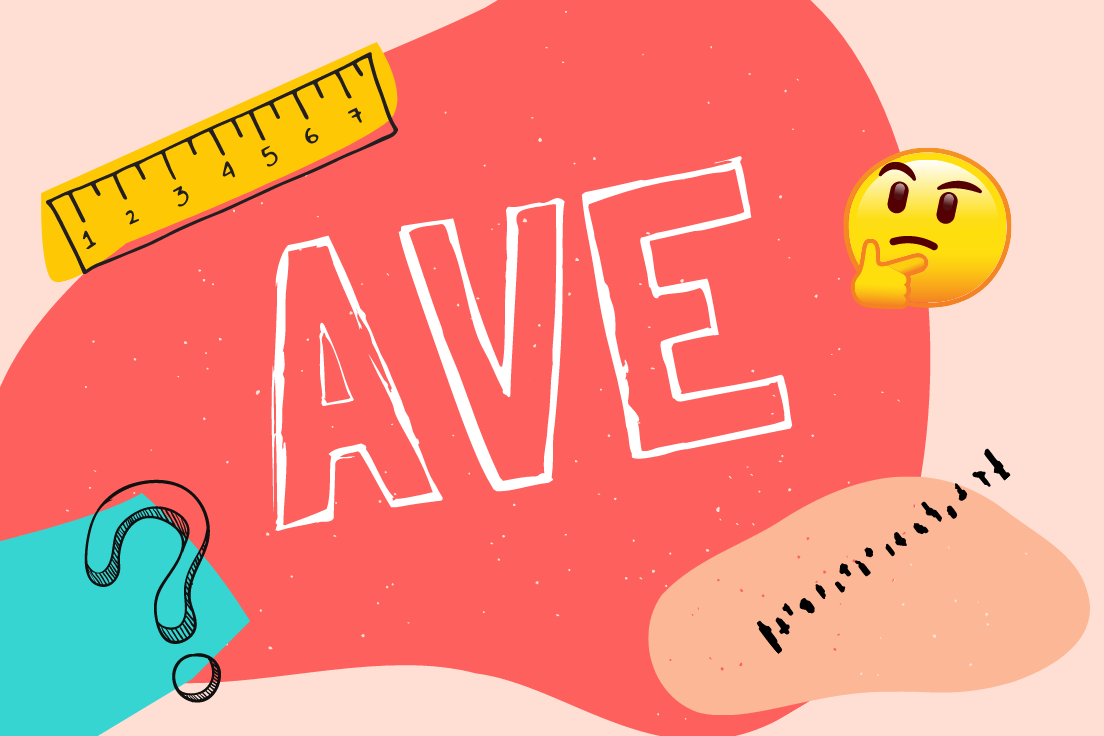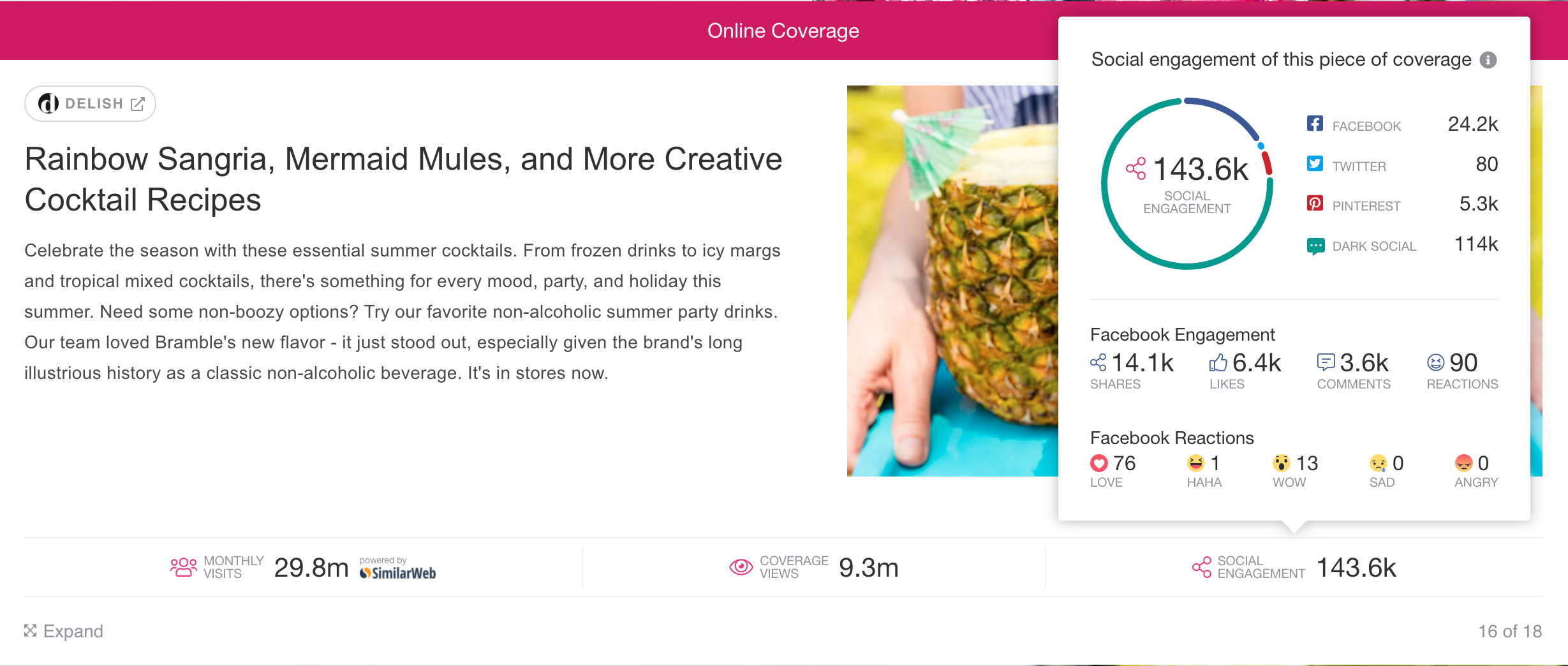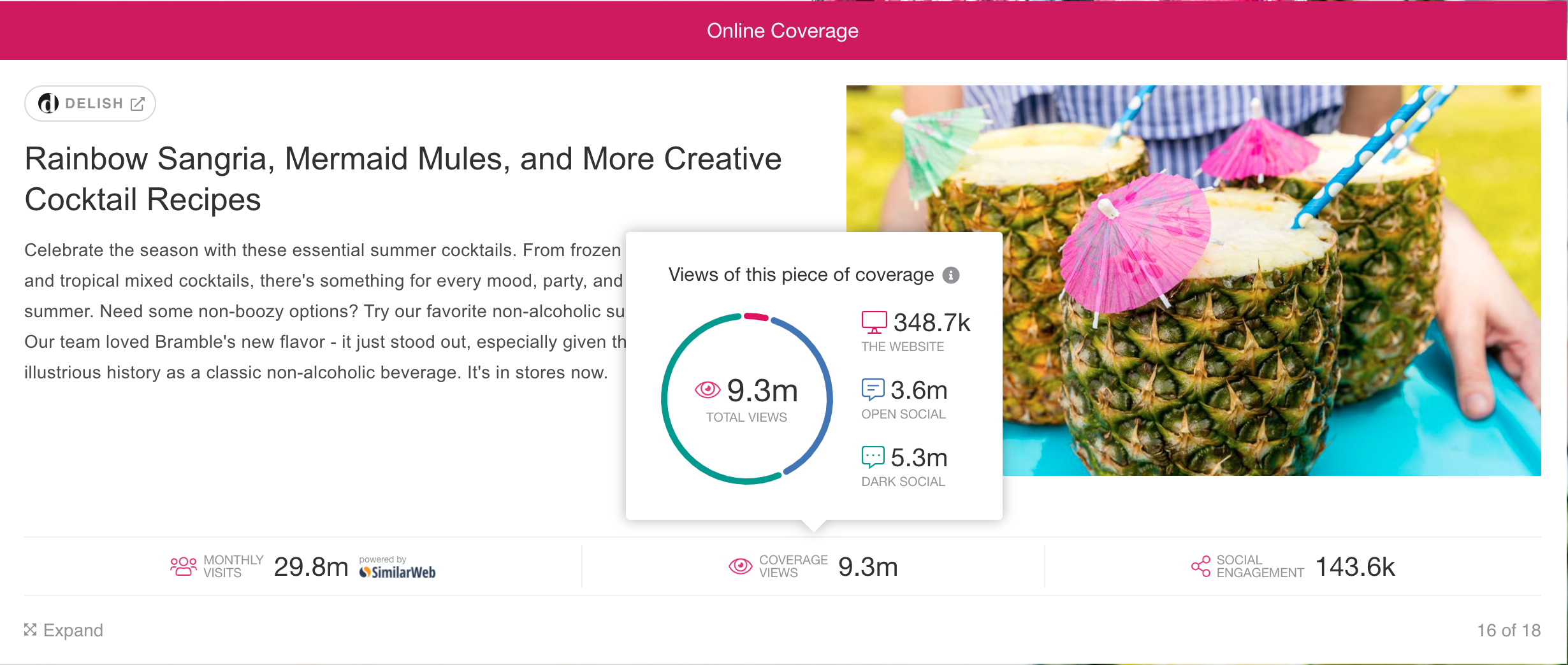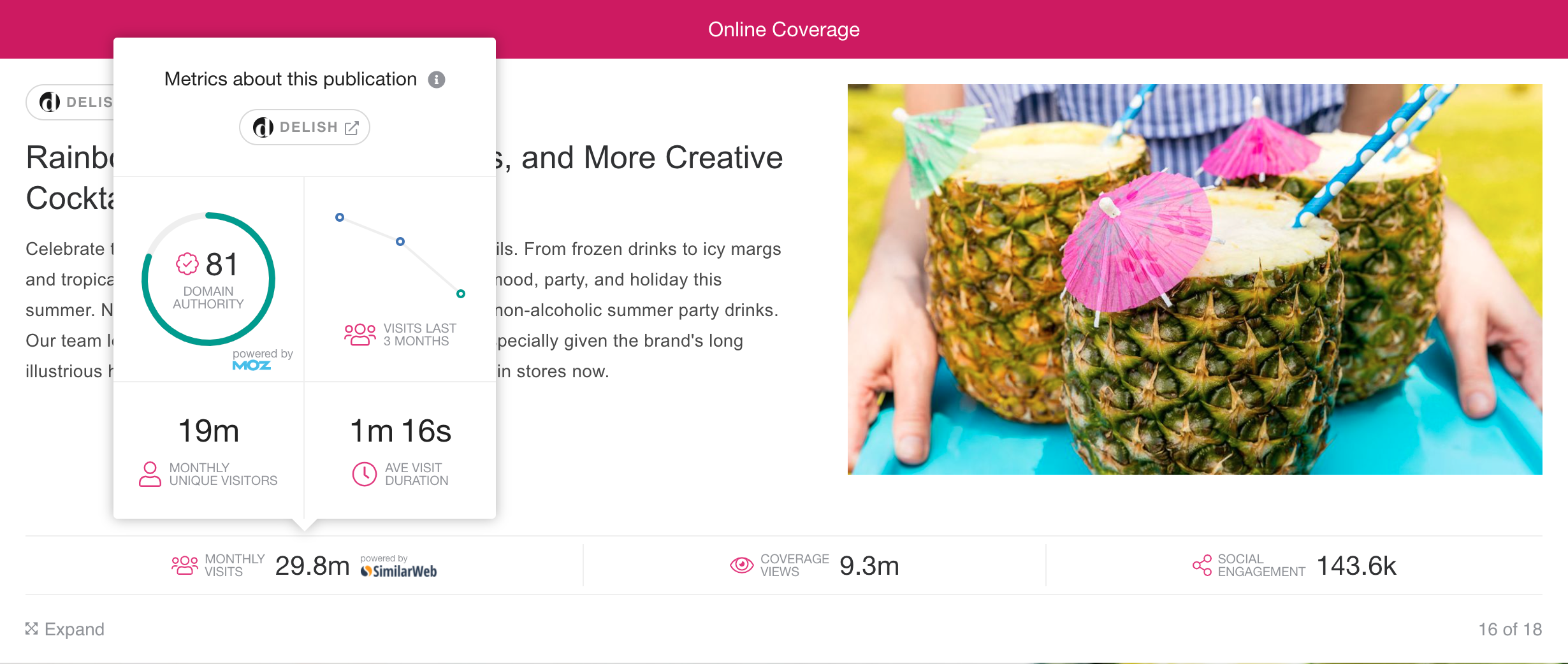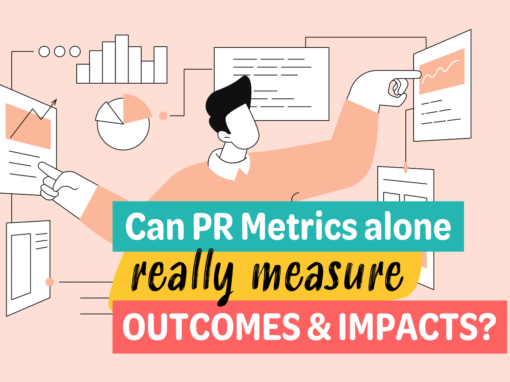On the face of it, AVE seems to offer a simple means of providing a monetary value for media coverage. However, as we’ll see, quantifying PR value with AVE is highly problematic and can be detrimental to the industry as a whole.
This guide will explore the use of Advertising Value Equivalency and consider whether this metric is still helpful in 2023.
What Does AVE Mean In PR?
AVE Meaning
AVE (Advertising Value Equivalency) attempts to measure the value of earned media coverage by assessing how much it would cost to buy ad placements of a similar size. As editorial pieces often draw more attention and engender more trust than purchased placements, the baseline advertising cost is then often given a multiplier.
How To Calculate AVE
Advertising Value Equivalency Calculator
The Advertising Value Equivalency formula can be broken down as follows:
AVE = Cost to buy an ad x editorial multiplier
For instance, if earned media is two pages long, and the rate for one page is £100, the cost to buy an ad equals £200. To emphasise the value of earned media compared to advertising placements, PRs will give this basic cost a multiple. In this case, they could multiply the cost (of £200) by three, giving an AVE of £600.
While the impartiality of editorial coverage inherently makes it more valuable than advertising placements, the PR industry has never settled on a standard multiplier. Some professionals do not use a multiplier to calculate ‘PR value’, while others use multipliers anywhere between two and ten.
Adding an arbitrary multiple in the Advertising Value Equivalency equation is just one major factor that undermines the metric as a whole. It’s just one of the reasons that so many PRs argue that AVE doesn’t offer any real insights into campaigns.
Is AVE An Accurate Metric?
No, AVE is not an accurate metric!
This isn’t the answer that many clients or executives like to hear. After all, the Advertising Value Equivalency offers convenience. It is understandable that PRs are keen to generate monetary figures to plug into coverage reports for example. In reality, PR value calculation is far more nuanced than AVE.
It’s easy to pick the metric apart.
Let’s take coverage on BBC News as an example. As it isn’t possible to advertise on the BBC, how can PRs measure earned coverage on BBC News in terms of AVE? They could compare the cost of advertising placements on other news networks, but this would throw more variables into the equation, such as viewership and demographics.
The International Association for the Measurement and Evaluation of Communication (AMEC) has pushed a global initiative to eradicate the use of AVE in the PR industry. Their “Say No to AVEs” campaign makes a clear case against the use of this vanity metric.
To summarise, here are the key reasons why PRs should say “no” to AVE as a PR value metric:
- Advertising and PR are fundamentally different and shouldn’t be conflated
- It’s not always possible to advertise where earned coverage is available
- Advertising Value Equivalents often confuse ‘value’ with ‘cost’
- AVEs do not take the quality of the coverage into consideration
- Earned media may not share the same tone as an advertisement
Does AVE Sugarcoat Coverage Reporting?
We believe that using AVE heavily undermines the true value of PR. Using the dying world of print media as a standard by which to measure our work does a disservice to the modern, dynamic communications industry.
Clients and executives are now much more aware of the differences between paid and earned media channels. This means they’re also more likely to recognise that AVE is a crude form of measurement for PR value.
Indeed, we conducted our own research into the issue which shows a significant reduction in the use of AVE across the industry. In 2015, 18% of reports created using our reporting tool featured AVE. In 2021, that number had reduced to 6%. In other words, the industry is headed in the right direction, but we still have some way to go!
What are the alternatives to AVE?
AVE has no clear successor. Rather than focus on a ‘silver bullet’ metric, the industry has instead significantly diversified its measurement techniques. There are now dozens of data points that can, together, paint a picture of the genuine value of PR.
Advertising Value Equivalency (AVE PR) – Closing Thoughts
The debate is over. AVE does more harm than good. As such, PRs must seek new ways to measure their work.
Our tool includes a raft of cutting-edge PR metrics, for example Coverage Views, live social engagement or estimated dark social shares. These help build a picture of true PR value.
You can learn more about Releasd by booking a 15-minute demo with one of our friendly team members.

